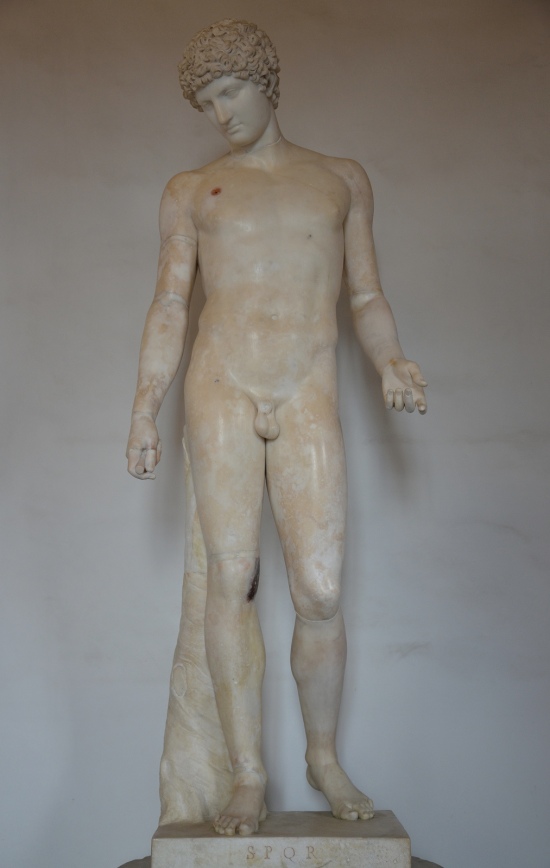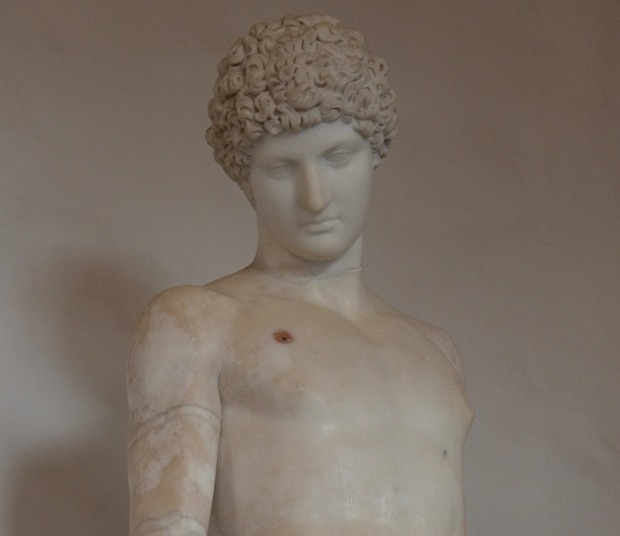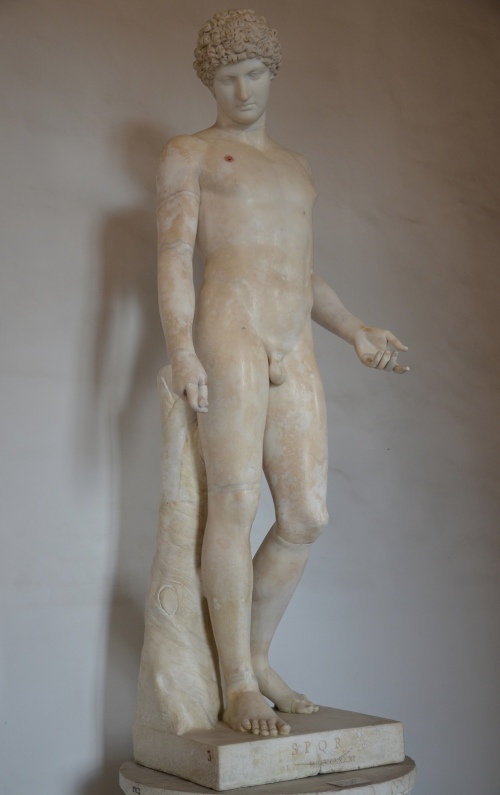This week’s sculpture from Hadrian’s Villa is a marble statue of a young nude, the so-called ‘Capitoline Antinous’. It was found in 1723/24 during the time when Giuseppe Fede was undertaking the earliest concerted excavations at the Villa Adriana. However its exact provenance within the Villa is unknown.
Considering that this work was found at Villa Adriana and owing to its melancholy gaze, the statue was thought to represent Hadrian’s lover Antinous. Until the end of the 19th century it was even regarded as the most famous statue of Antinous. After a long debate among scholars, the statue was finally identified as Hermes, the messenger god, because the head differed so radically from the recognized Antinous types.
The god Hermes is depicted at a young age and is entirely naked. He is shown in a quiet moment and is delicately posed; his pelvis is turned slightly to the right with a corresponding torsion of the head and shoulders. His hair is a work of carefully sculpted curls and are reminiscent of the style of Praxiteles, the famous 4th century BC Greek sculptor (see the Praxiteles’ Hermes).
Originally part of the Albani collection, the statue was acquired by Pope Clement XII in 1733 and subsequently moved to the Capitoline Museums where it remains today. The work dates to the late Hadrianic / early Antonine period (c. 130-150 AD) and is a copy of an earlier 4th century BC Greek statue.


